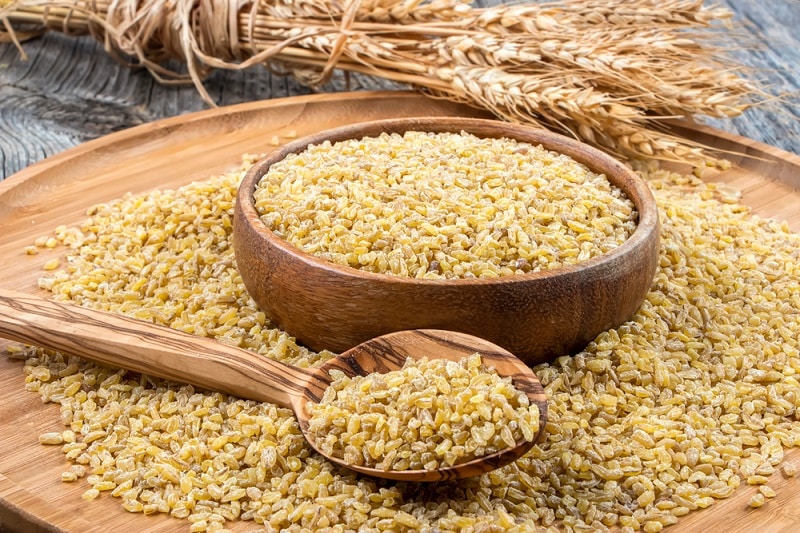
DISCLOSURE: This post may contain affiliate links, meaning when you click the links and make a purchase, I receive a commission. As an Amazon Associate I earn from qualifying purchases.
Bulgur wheat is a popular ingredient in many traditional Middle Eastern dishes. This nutritious grain is easy to cook, versatile, and comes with many potential health benefits.
If you either don’t like Bulgur or don’t have any on hand, you can replace the stale grain with any of these upcoming Bulgur substitutes. However, before we get to the tastiest alternatives out there, let’s first examine what Bulgur wheat is and how it is used.
What is Bulgur Wheat?
Bulgur wheat is an edible whole-grain cereal that’s made from various types of cracked wheat. The majority of Bulgur is made from durum wheat, but other varieties are also available. Whole wheat berries are parboiled or steamed before being hulled, dried, and then finally cracked.
Due to the precooking, the Middle Eastern delicacy bulgur has a rapid cooking time. It’s far faster to prepare than barley or brown rice, taking 12-minutes flat from start to finish. Bulgur can be served as a cereal or cooked into bread, soups, and various desserts.
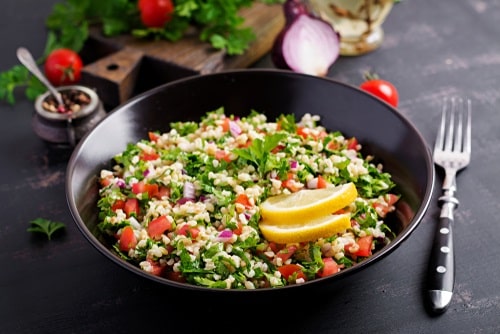
As a wheat product, those with gluten issues should stay away from it. However, if you’re not a celiac sufferer and/or have no gluten sensitivity, Bulgur provides healthy nutrition, supplementing any well-rounded diet.
A variety of sizes are available. Bulgur wheat has a scale of 1 to 4, where 1 is the smallest and 4 is the largest grain.
Purpose of Bulgur in Different Recipes
Bulgur wheat has a light, nutritious flavor and a chewy texture. Bulgur only undergoes light processing, which leaves it with a great deal of nutritional value. A single serving gives 30% of an adult’s daily fiber intake, and bulgur wheat is also a good source of manganese, iron, and magnesium.
Add Bulgur to salads like tabbouleh or pilaf and herbs, vegetables, spices, and even other grains. It’s ideal for breakfast serving with oatmeal or can be used as a base for soups, stews, and spicy gumbos. Almost any recipe that calls for rice, couscous, or cereal can use bulgur wheat.
Bulgur Substitute: Alternatives to Bulgur Wheat
[amazon box=”B003RX74AQ”]
There are several alternatives to Bulgur if you are don’t have one. Replace Bulgur with these according to the recipe you are following.
1. Buckwheat

Buckwheat is an ancient pseudo-grain with a long history of use. It’s widely consumed in Asia and Eastern Europe and has been a staple for centuries.
Popularity has been steadily rising in the West due to buckwheat’s many benefits. While most often called a cereal, buckwheat is actually a fruit seed of the rhubarb, sorrel, and knotweed genus.
The complex carbohydrate seeds closely resemble grain, leading to buckwheat, sometimes being called fake corn. Even though buckwheat isn’t cereal, it can be used as one when cooking.
[amazon box=”B0153RXE0M”]
2. Brown Rice
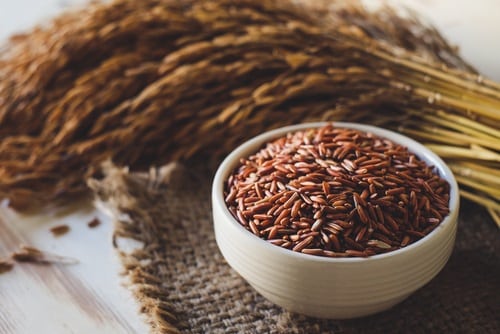
Brown rice is a rich source of dietary fiber and a reliable bulgur substitute. Despite not being a grain, brown rice cooks to a similar texture granting a similar flavor profile.
The only downside to substituting with rice is that it’s much higher in calories, carbohydrates, and fat. Therefore, most people replace Bulgur and other grains in the place of rice.
Keep this in mind if you’re fresh out of Bulgur and need a cheap, readily available alternative.
[amazon box=”B00G9U46DW”]
3. Quinoa

Quinoa is a complete source of Vegan protein, providing all nine essential amino acids. The seeds of this annual herb of the Amaranth family are richer in protein, dietary fiber, B vitamins, and minerals than most grains.
A single cup of quinoa gives you twice the amount of protein compared to bulgur wheat and five grams more fiber than an equal serving of white rice.
The high protein and fiber content meals that quinoa keeps you feeling fuller for longer. Give it a try in all types of dishes, but salads work exceptionally well – Tabbouleh with quinoa is an excellent substitute for traditional Bulgur.
[amazon box=”B00JPJRQ7W”]
4. Brown Rice Couscous
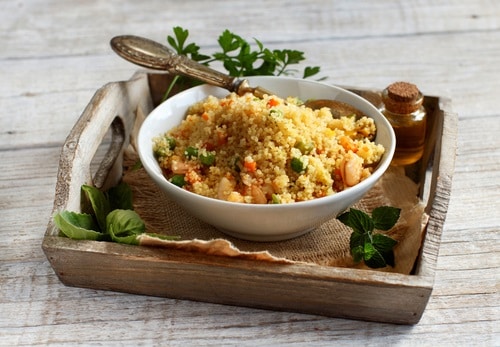
Brown rice couscous is a reliable, healthy alternative to Bulgur that works particularly well for savory meals. Light, fluffy, and extremely quick-cooking, it’s a nutty, tasty substitute that’s strikingly versatile.
It’s lower in calories, carbohydrates, and fiber but works just about any recipe that calls for Bulgur. Brown rice couscous also has a higher GI index than bulgur wheat, making it an attractive option for those looking to lose weight.
5. Farro
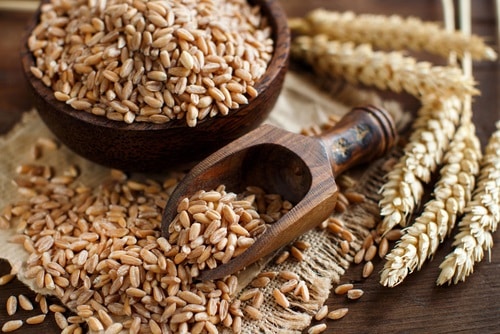
Farro is NOT a gluten-free grain that has been in use since ancient times. Whole-grain farro is the highest in nutrients and the best bulgur substitute. It’s nutty and packed with flavor but takes a full night’s soaking and over an hour to cook.
Semipearled and pearled farro take far less time to cook, but they’re not as nutritious. A cup of farro contains 220 calories, 2 grams of fat, 47 grams of carbohydrates, 8 grams of protein, and 6 grams of fiber.
That puts it on par with quinoa in protein, or almost double the protein in white and brown rice. Try lightly chopping your farro in a blender or first processor first for the best bulgur substitute.
[amazon box=”B088KNFD9M”]
6. Couscous
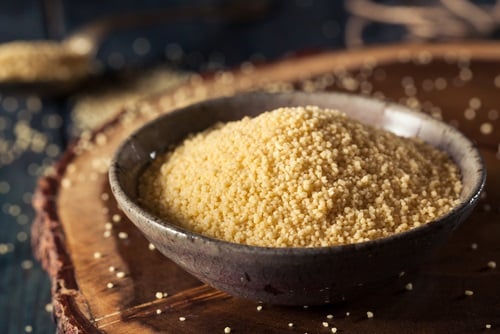
Before opting for couscous, keep in mind that it’s high in gluten and may not be suitable for all diets. There are two primary varieties of couscous available – Israeli and Morrocan couscous.
We recommend that you go for the smaller Morrocan variety, which is just a little later than bulgur wheat grains. A cup of cooked Morrocan couscous contains 176 calories, 36 grams of carbohydrates, 2 grams of fiber, and 6 grams of protein.
[amazon box=”B000EH2VV0″]
7. Pearl Barley
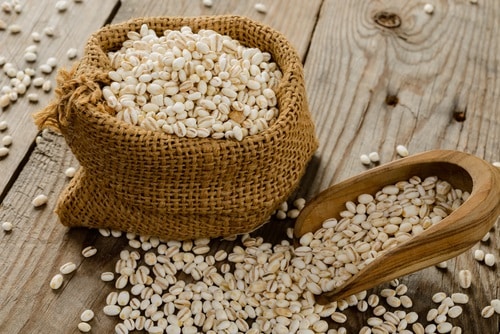
Whole grain pearl barley cooks to a similar consistency as Bulgur, just much faster. However, it’s less chewy and has a fairly neutral taste which makes it a flexible alternative.
A cup of cooked pearl barley contains 193 calories, 3.6g of protein, 0.7g of fat, 44.4g of carbohydrates, and 6g of fiber. Pearl barley is an excellent source of dietary fiber, coming packed with 43% of your daily thiamine intake in a single serving.
[amazon box=”B07WSSB4JC”]
8. Millet

Millet is an affordable bulgur substitute that’s widely available in developing countries. There are several different species of millets, with the most common varieties being Pearl, Foxtail, Proso, Finger, Sorghum, and Buckwheat.
Millet is consumed as a traditional food in many places around the world. Whether enjoyed as a cereal or included in a savory dish, all types of millet are great go-to bulgur substitutes.
A cup of cooked millet delivers 207 calories, 6.1 grams of protein, 2.3 grams of fiber, 1.7 grams of fat, and 41.2 grams of carbohydrates. As you’ll notice, it’s not as nutritious as many of the other whole grains suggested, but the texture is a nearly identical match to Bulgur.
[amazon box=”B01F7T3BKY”]
9. Teff
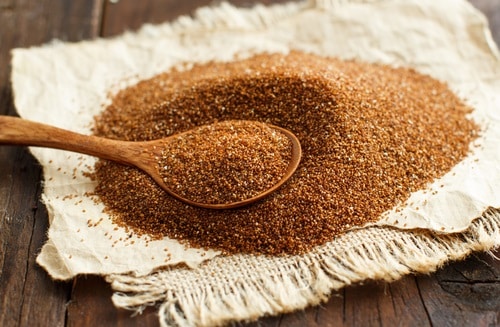
Teff, or Eragrostis tef, is a species of lovegrass harvested as cereal grass. Native to Ethiopia, the edible seeds come in different colors and have a mild and nutty taste.
Keep in mind that teff is much finer than the other bulgur substitutes. With grains roughly the same size as poppy seeds, it’s one of the finest suggested.
A single serving of teff provides 6 grams of protein, 4 grams of fiber, and a quarter of the recommended daily magnesium intake. You also get a healthy concentration of iron, calcium, vitamin B6, and zinc.
[amazon box=”B00WZY0N2E”]
10. Chopped Cauliflower

Cauliflower is an excellent low-calorie alternative to Bulgur. It has a light texture and taste. When appropriately prepared, cauliflower looks like rice giving it a close consistency to Bulgur.
Chopped cauliflower is one of the best alternatives for those on low-carb eating plans like the Keto diet. Half a cup of chopped cauliflower grants 13 calories instead of a whopping 100 calories from a half-cup of white rice.
To prepare the ideal bulgur substitute, either slice your cauliflower thinly or grind it to cauliflower rice in a food processor. All it takes is a few minutes of simmering over medium heat with a touch of oil until smooth and browned.
[amazon box=”B08Q4LDZC3″]
Which Is Your Favorite Bulgur Substitute?
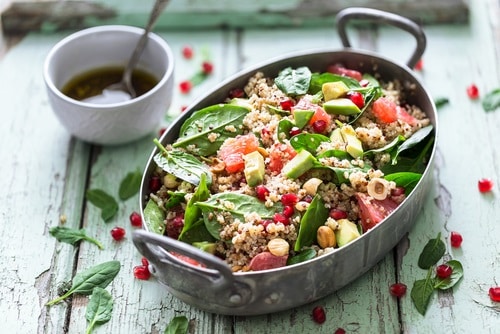
We hope that you’ve found a tasty alternative from our list of the best bulgur substitutes. Each can take the place of Bulgur without spoiling the texture and taste of your recipe.
Which bulgur wheat substitute is your favorite? Are there any that work particularly well with a specific meal or food type? We encourage you to share your findings in the comments below.